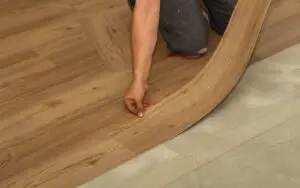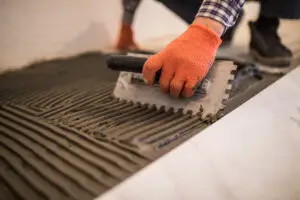What Is Carpet Underlay?
Carpet underlay is a layer of material placed between the subfloor and the carpet to enhance its performance and longevity. It provides additional cushioning, support, and insulation, making it a vital component in many carpet installations.
Definition and Purpose
Underlay serves multiple purposes, including improving comfort, extending the life of the carpet, and enhancing thermal and sound insulation. Common materials used for underlay include foam, rubber, and felt, each offering unique benefits.
How It Enhances Carpet Installation
- Boosts Comfort: Adds a plush feel to the carpet underfoot.
- Protects Lifespan: Reduces stress on the carpet fibers by absorbing impact.
- Improves Soundproofing: Minimizes noise transmission between floors.
Types of Carpet Underlay
Choosing the right type of underlay is essential for maximizing the benefits of carpet installation. Different materials are suited for various settings and needs.
Foam Underlay
Foam underlay is lightweight, affordable, and versatile. It works well in most rooms, offering a balance of comfort and insulation.
Rubber Underlay
Rubber underlay is known for its durability and sound-absorbing properties. It is ideal for high-traffic areas and commercial spaces.
Felt Underlay
Felt is a traditional underlay material that excels in insulation. It’s especially effective in maintaining warmth and reducing energy costs.
Benefits of Using Underlay
Enhances Comfort and Support
Underlay softens every step, providing a cushioned surface that enhances comfort. This makes it especially desirable in bedrooms and living spaces.
Extends Carpet Longevity
By absorbing impacts and distributing pressure evenly, underlay prevents premature wear and tear, helping your carpet maintain its appearance over time.
Improves Soundproofing and Insulation
Underlay significantly reduces noise, making it ideal for multi-level homes. Additionally, its insulating properties help regulate indoor temperatures, lowering energy bills.
Situations Where Underlay May Not Be Needed
Direct Glue-Down Carpets
Certain commercial spaces use carpets that are glued directly to the floor without underlay. While this method is cost-effective, it sacrifices comfort and soundproofing.
Pre-Installed Carpet Padding
Some carpets come with built-in padding, eliminating the need for a separate underlay. However, additional underlay might still enhance performance in high-traffic areas.
How to Choose the Right Underlay
Selecting the right underlay depends on your specific needs, including room type, traffic level, and desired insulation.
Room-Specific Recommendations
- Living Rooms and Bedrooms: Foam underlay for comfort.
- Stairs and Hallways: Rubber underlay for durability.
- Basements and Bathrooms: Waterproof underlay to resist moisture.
Thickness and Density
- Thicker underlay offers better comfort and insulation.
- Denser underlay is ideal for high-traffic areas to provide lasting support.
Professional vs. DIY Installation
Risks of Skipping Underlay
- Shortens carpet lifespan.
- Causes uneven surfaces, affecting appearance and feel.
Advantages of Professional Installation
- Guarantees proper underlay placement.
- Ensures compatibility with carpet type, improving durability.
Cost Implications of Adding Underlay
Upfront Costs vs. Long-Term Savings
Investing in quality underlay increases initial costs but saves money by reducing wear and extending carpet life.
Factors Affecting Costs
- Material type (foam, rubber, or felt).
- Room size and complexity of installation.
Common Myths About Carpet Underlay
“It’s Not Necessary for Modern Carpets”
While some carpets have built-in padding, underlay significantly enhances comfort, durability, and insulation in most cases.
“It Doesn’t Affect Noise or Temperature”
Underlay plays a critical role in reducing noise and improving energy efficiency by acting as a thermal barrier.
DIY vs. Professional Carpet Installation
DIY Installation: Challenges to Consider
- Risk of uneven underlay placement leading to bumpy carpets.
- Requires specialized tools and expertise.
Why Hire a Professional?
Professional installers ensure the right type of underlay is selected and correctly installed, providing long-term benefits and peace of mind.
Case Studies: The Impact of Underlay
Example 1: Home Renovation
A homeowner added foam underlay during a living room carpet replacement. The result was a quieter, more comfortable space with better insulation, reducing energy costs.
Example 2: Commercial Space
A busy office utilized rubber underlay for its durability and soundproofing qualities. This choice extended the carpet’s lifespan despite heavy foot traffic.
FAQs & Answers
Not every carpet requires underlay, but using it can greatly enhance performance and comfort. For example, in areas like stairs or living rooms, underlay adds cushioning and protects the carpet from wear. Some carpets come with built-in padding, but even in these cases, a separate underlay can provide additional benefits such as soundproofing and insulation.
Yes, carpets can be installed without underlay, but it’s not usually recommended. Skipping underlay can lead to faster wear and tear, reduced comfort, and potential issues with uneven surfaces. In commercial settings or for direct glue-down carpets, underlay may not be used, but for most residential installations, it’s a wise investment to enhance the carpet’s performance and longevity.
Rubber underlay is often the top choice for soundproofing. Its dense material helps absorb sound and reduces noise transmission between floors, making it ideal for apartments, offices, or multi-level homes. Foam underlay with soundproofing qualities can also be effective for quieter spaces like bedrooms. A professional installer can help select the right option based on your specific needs.
Choosing the right underlay depends on the function and usage of the room. For high-traffic areas like hallways, a durable rubber underlay works best. Bedrooms or living rooms benefit from soft foam underlay for added comfort. For areas prone to moisture, such as basements or bathrooms, waterproof underlay is essential. Consulting a professional ensures the right material, thickness, and density are chosen for your space.
Yes, underlay significantly extends the lifespan of your carpet. By acting as a protective barrier, it absorbs impact and prevents stress on carpet fibers. Additionally, underlay reduces friction between the carpet and subfloor, preventing premature wear. Over time, this added protection can save you money by delaying the need for carpet replacement.





